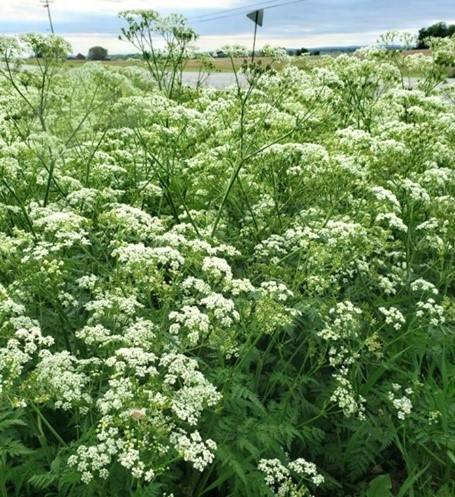Poison Hemlock

This member of the carrot family is often mistaken for Queen Anne’s Lace, carrots and parsnips but should not be eaten under any circumstances. Poison hemlock is a tall, invasive and as the name suggests poisonous weed that can cause severe reactions in people and animals. Poison hemlock has lacy, fern like leaves with purple blotches on the stem and white, flat bloom clusters. It is a biennial, which forms a rosette the first year and will bolt with a bloom stalk the second year. Plants typically grow 2 to 6 feet tall with multi branched stems. All parts of this plant are poisonous but the seeds are the worst while the sap causes rashes on the skin and if ingested can lead to muscle paralysis and suffocation. Poison hemlock can often be found in roadside ditches and in damp locations. When working with this weed be sure to wear long sleeves and gloves to prevent contact with the sap. Control can be found by either removing the plants with a hoe or shovel or spraying large areas with a herbicide containing glyphosphate, 2,4-D, clopyralid or a product combination of active ingredients.

Have questions? Contact our office where our Horticulture Extension Agent will assist you with questions.
Phone: (316) 321-9660
Email: callae@ksu.edu